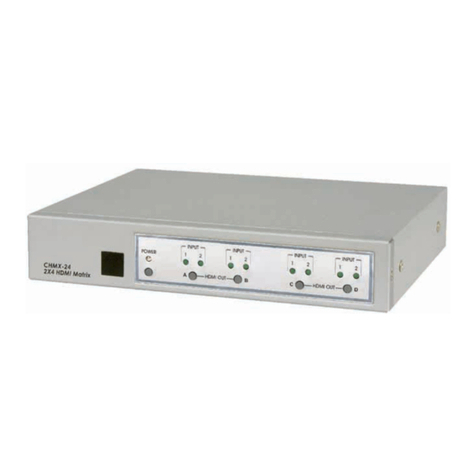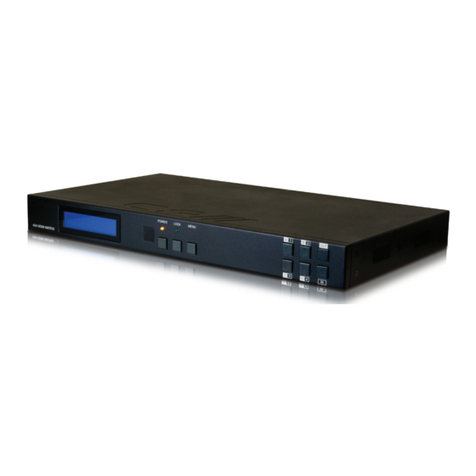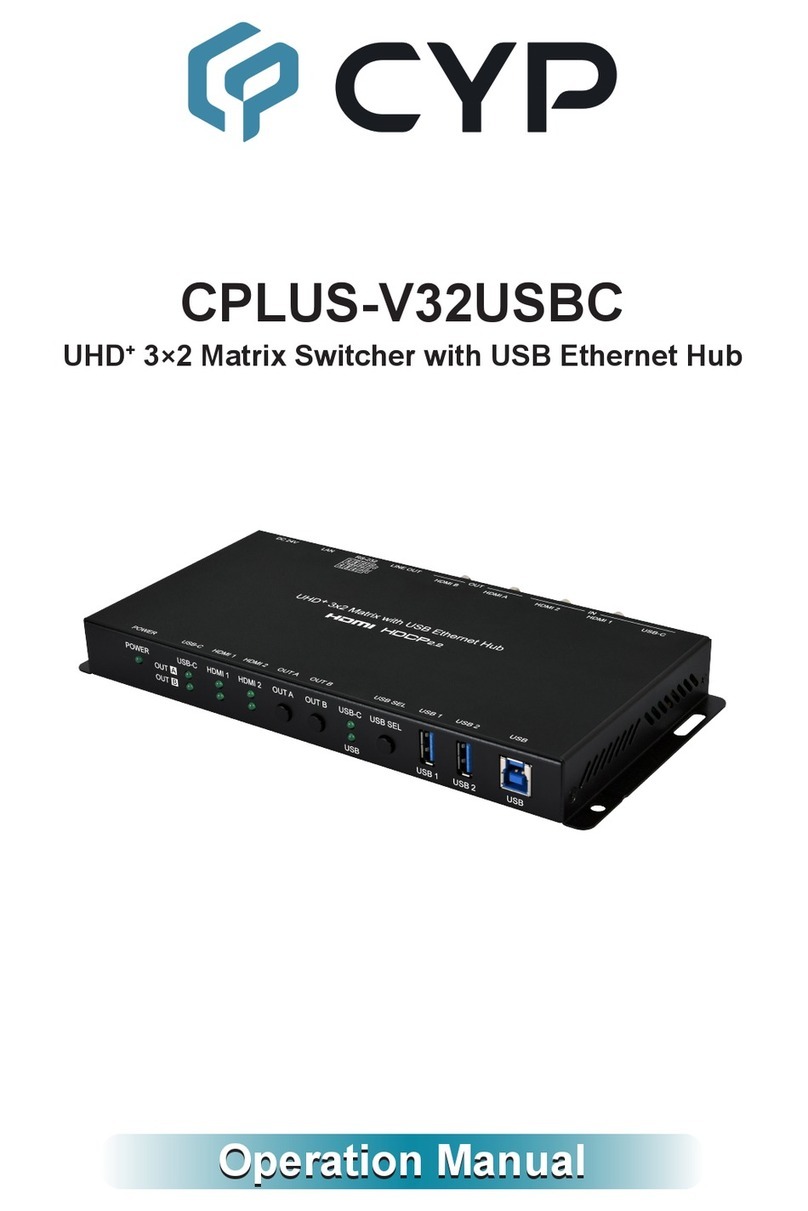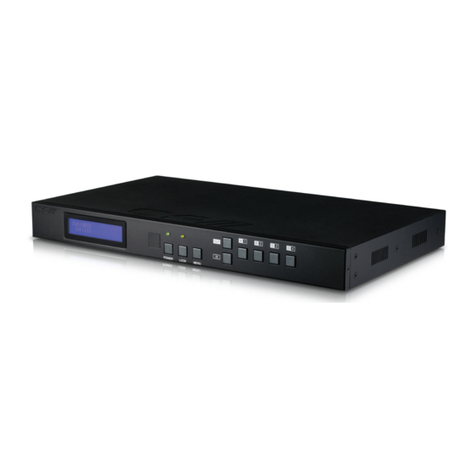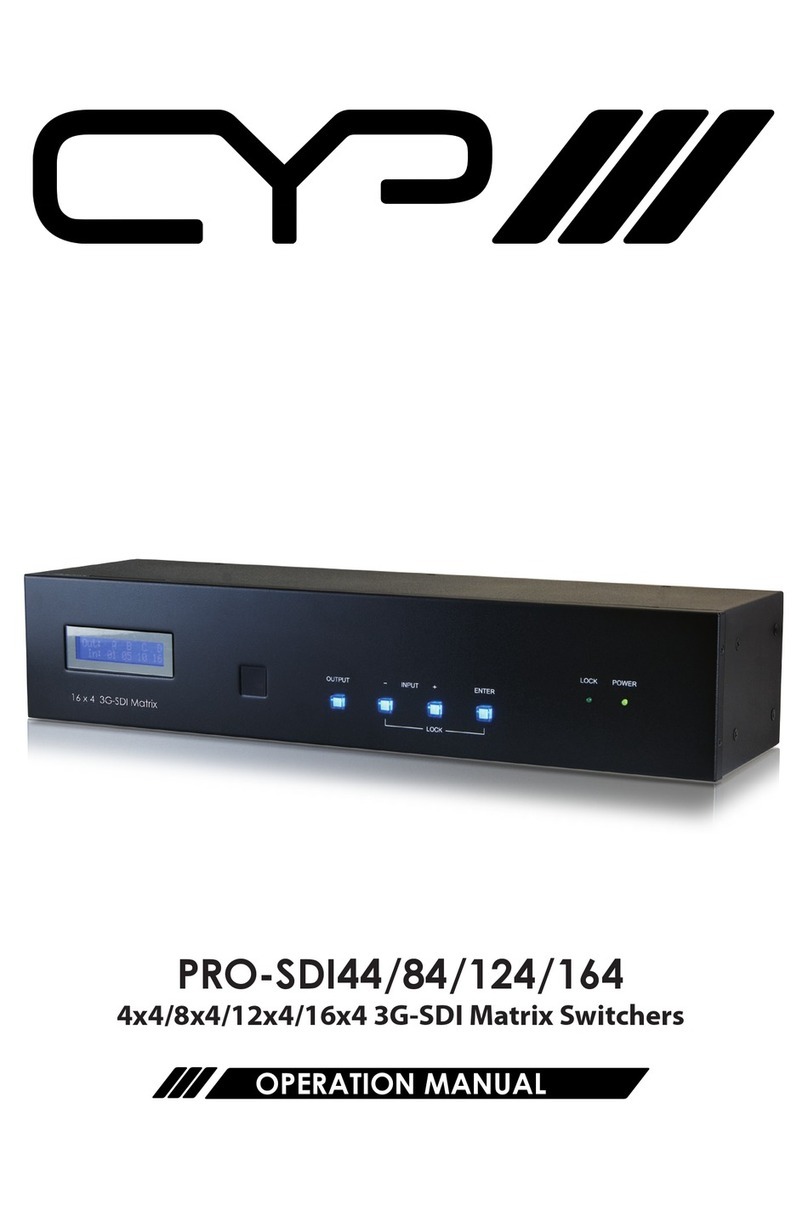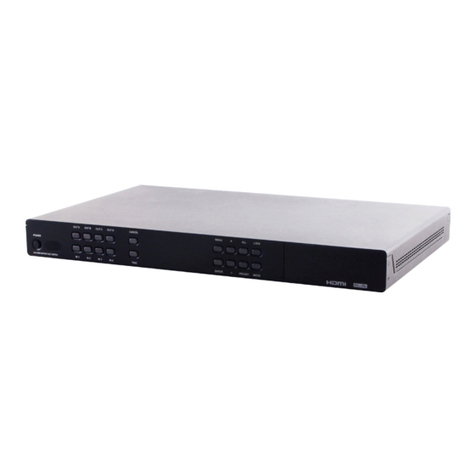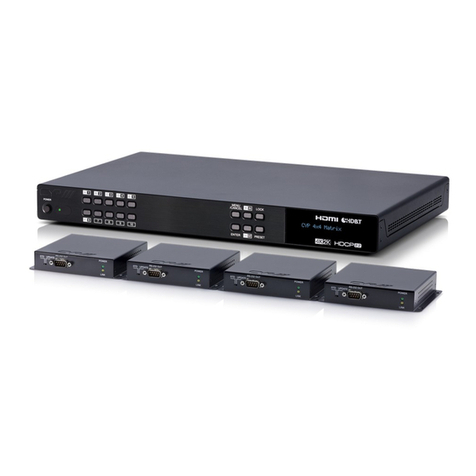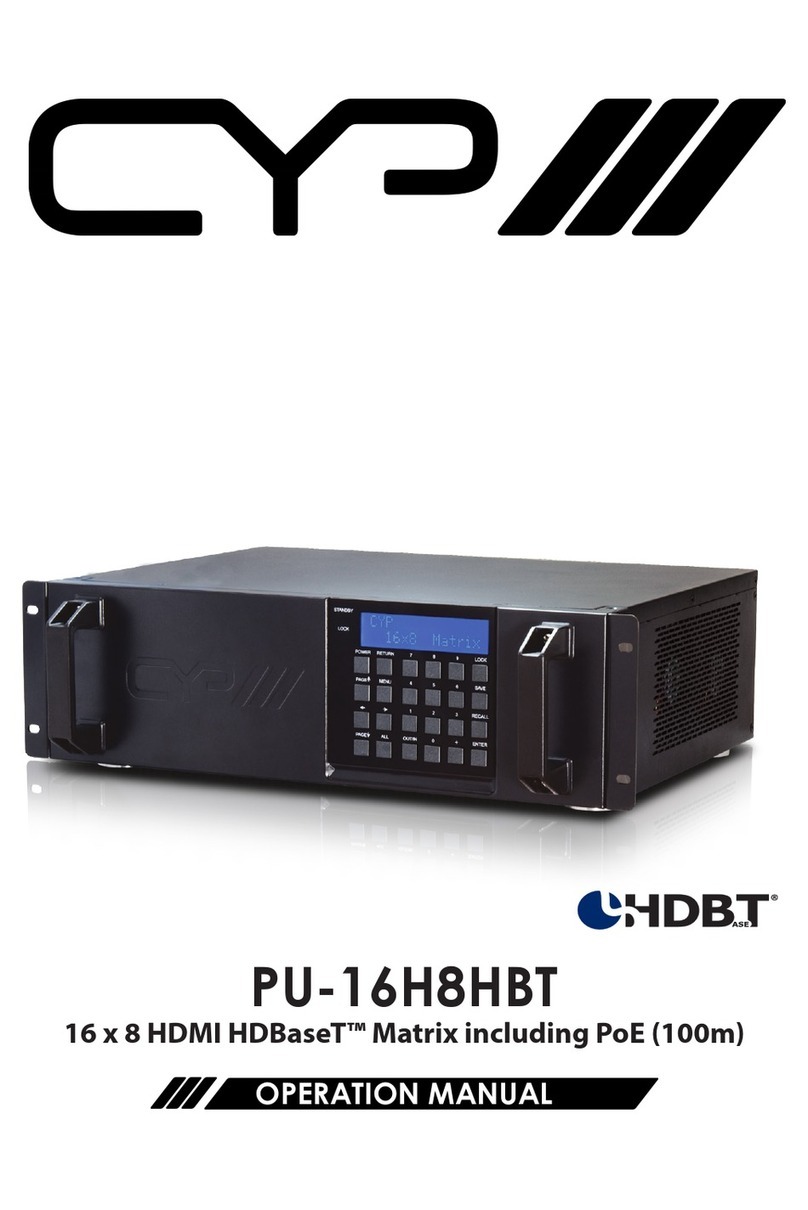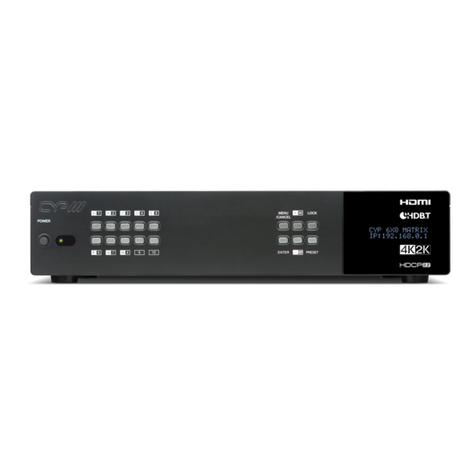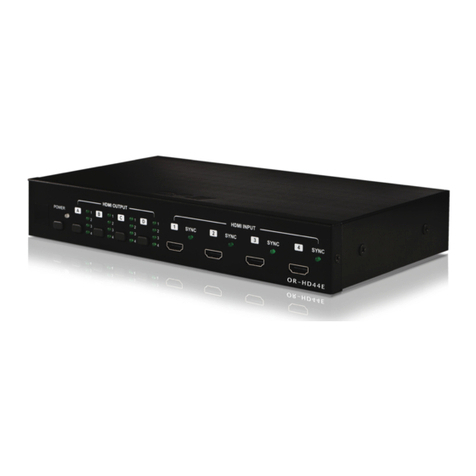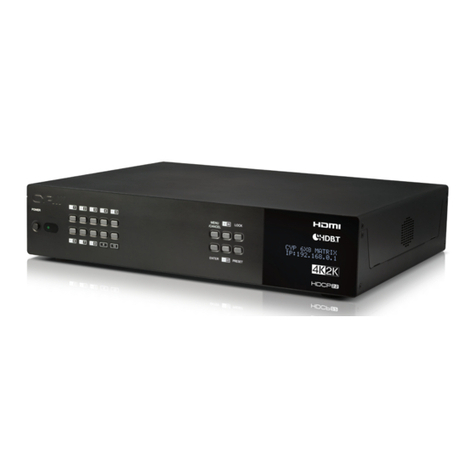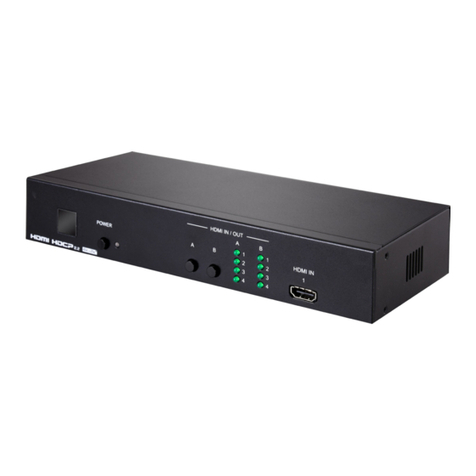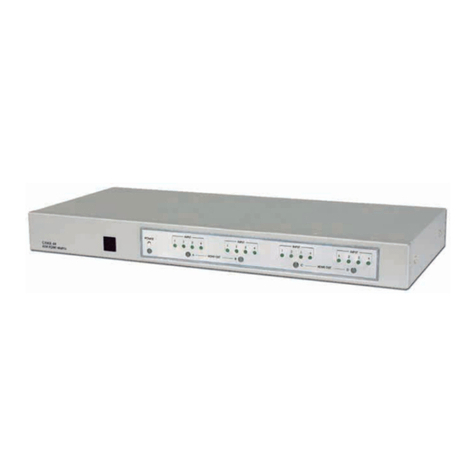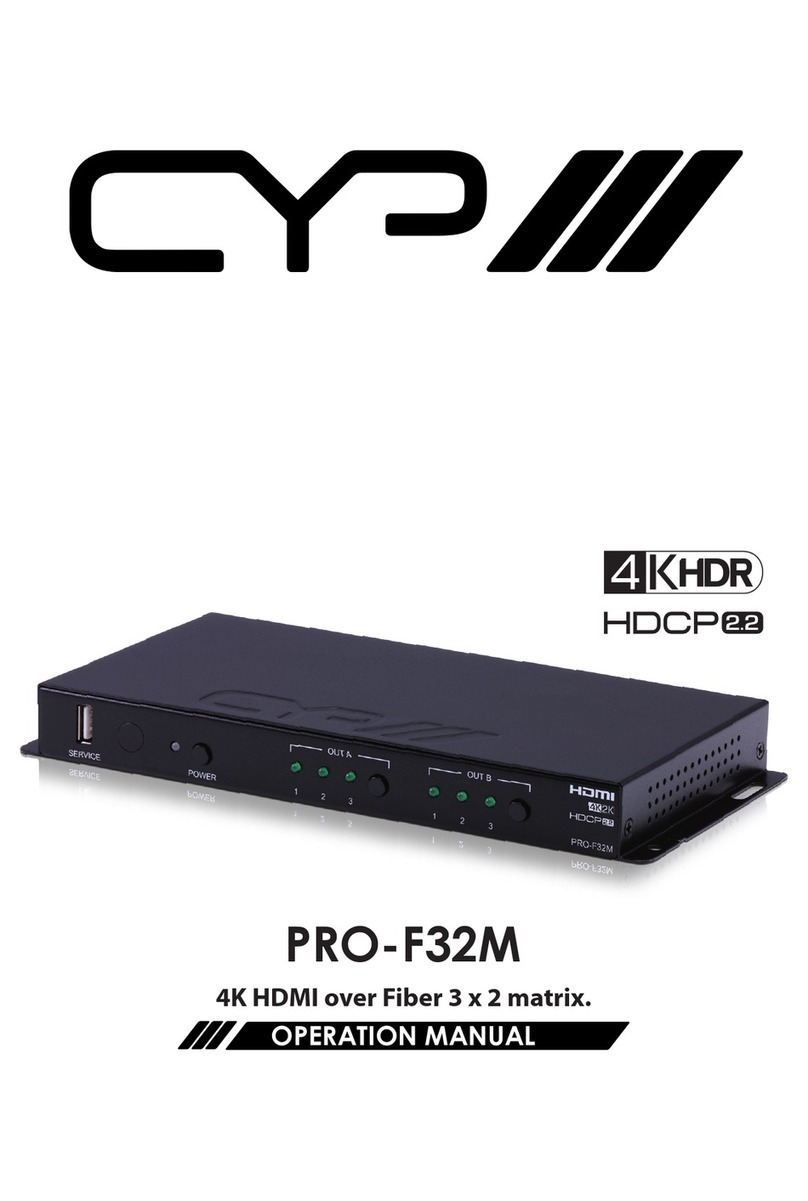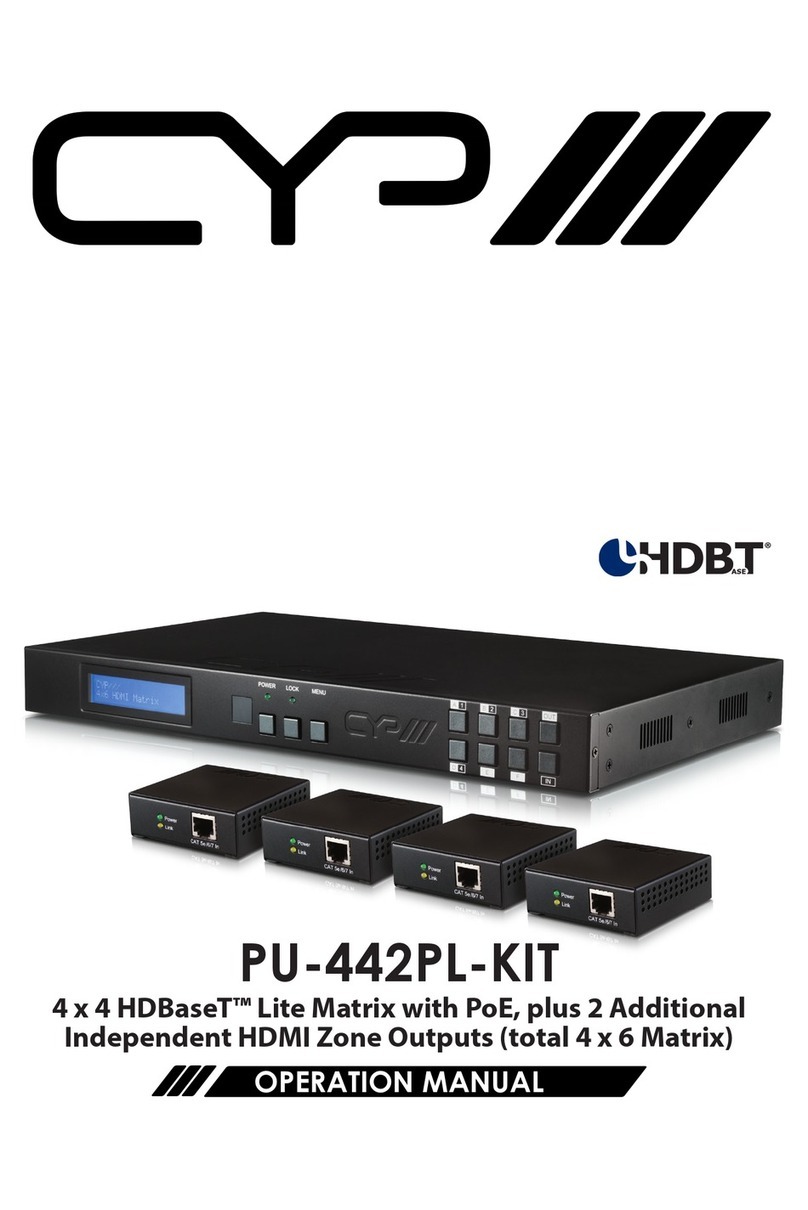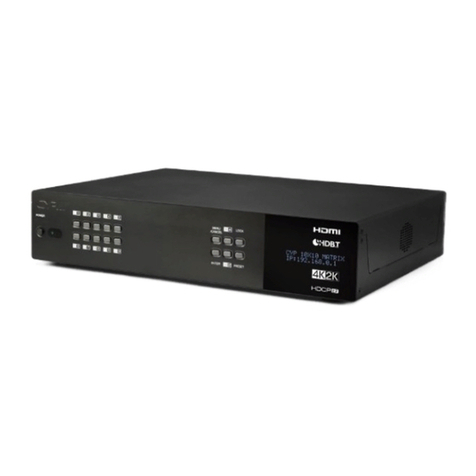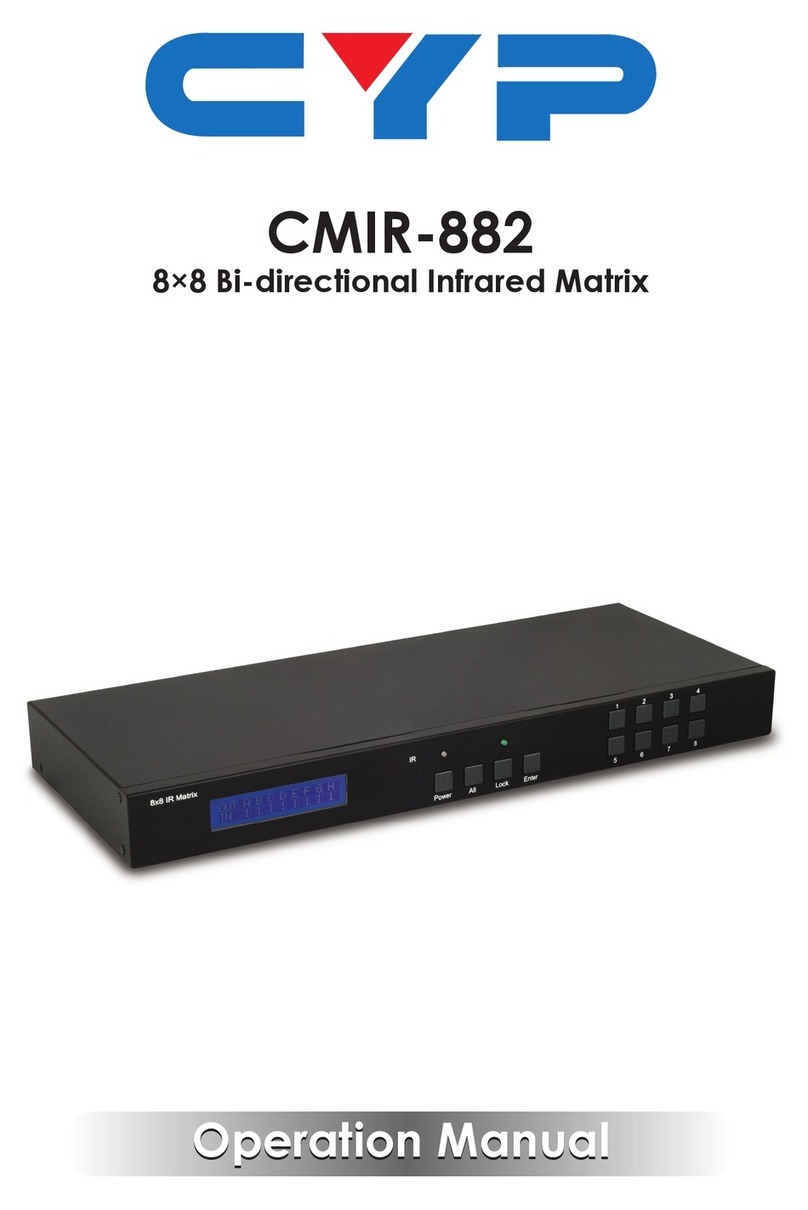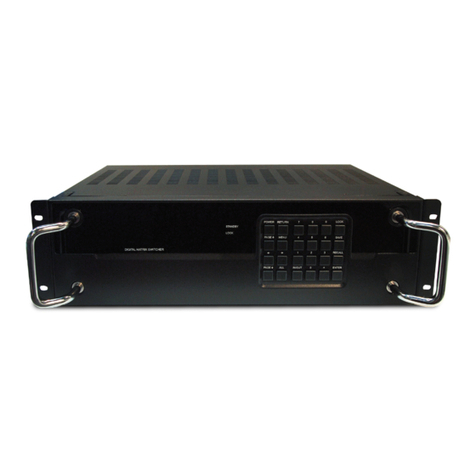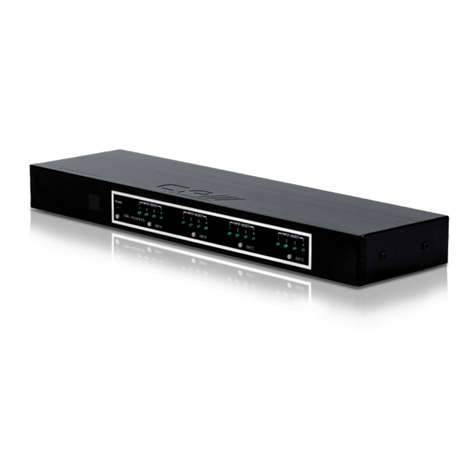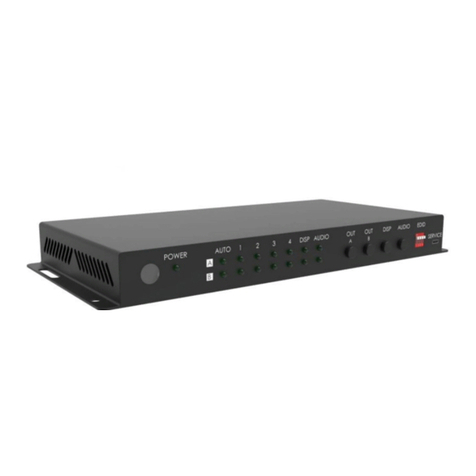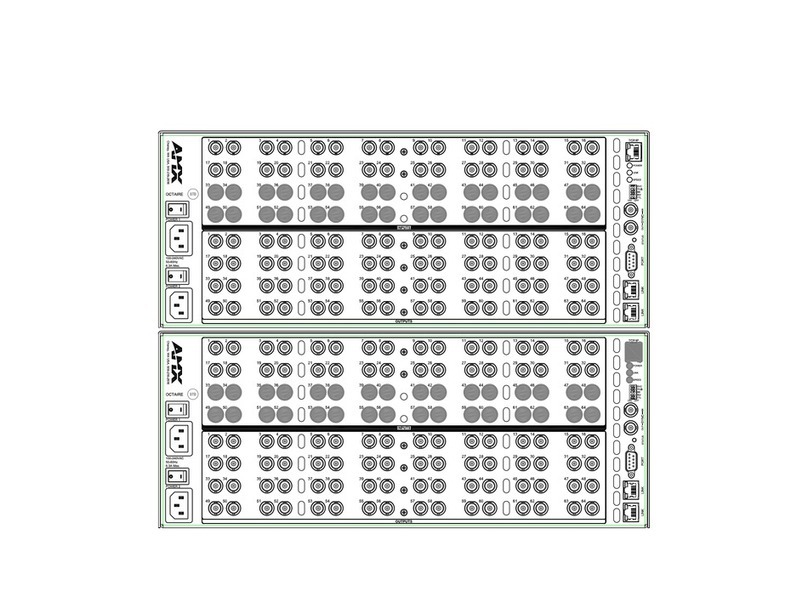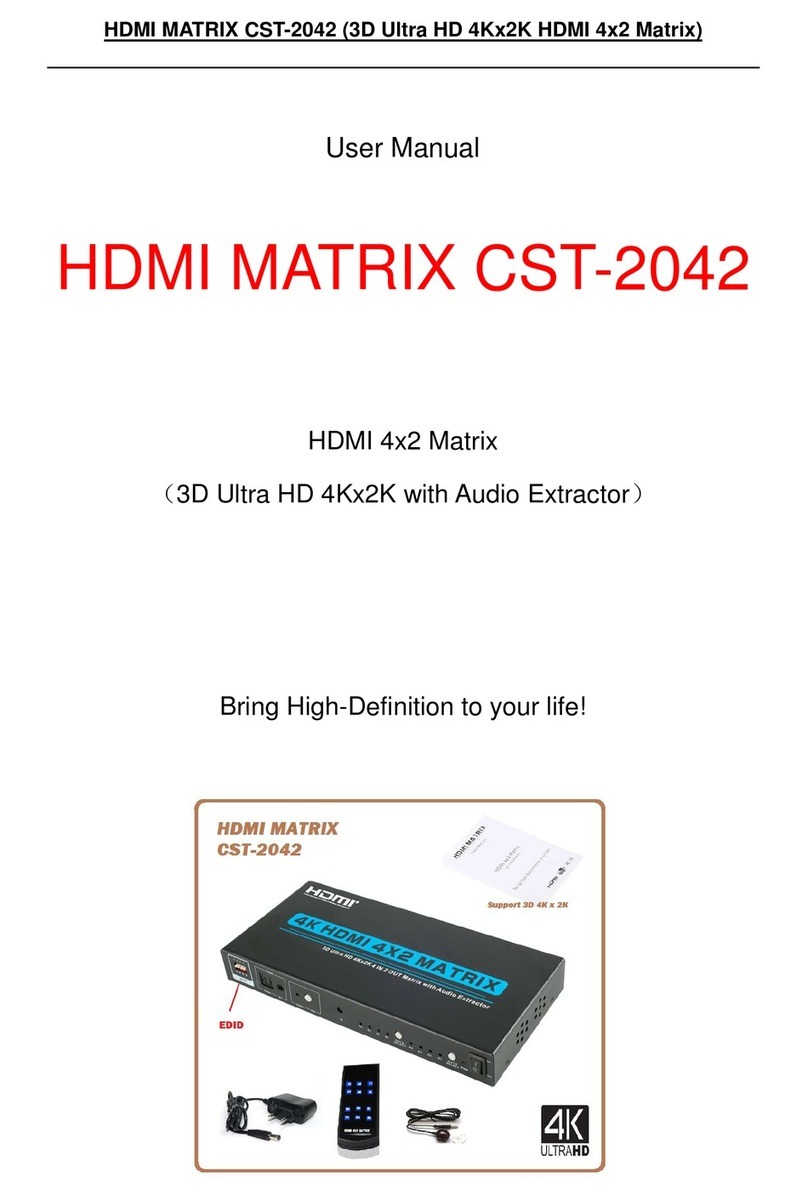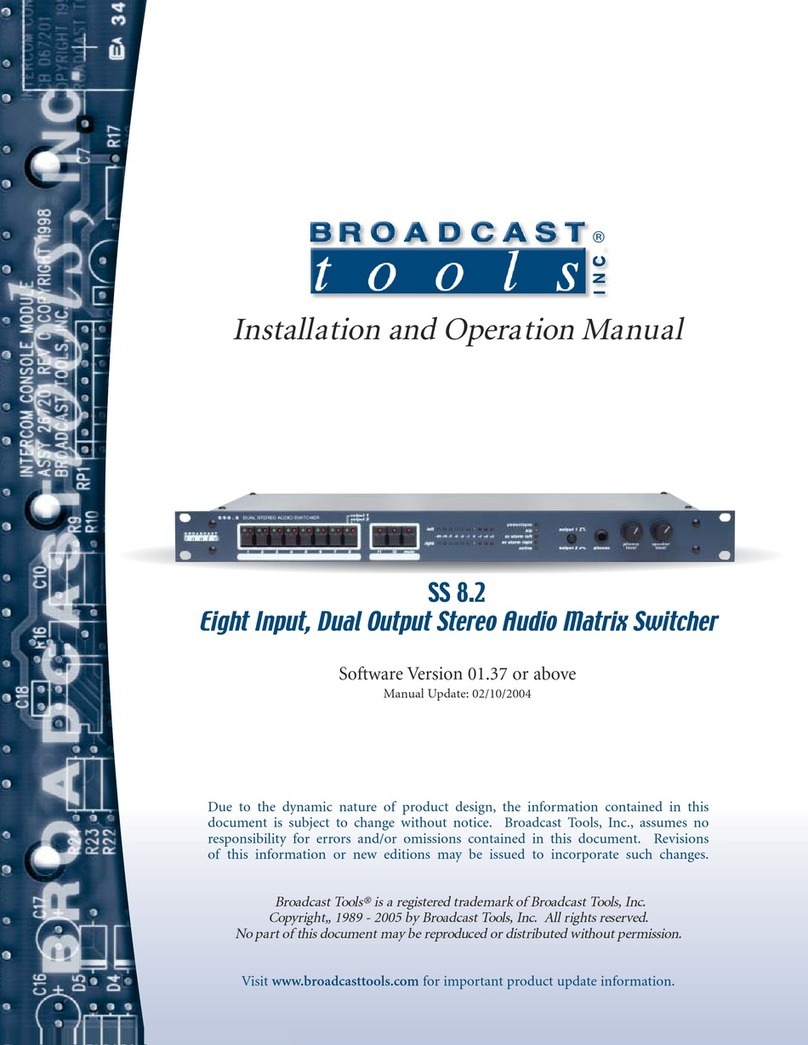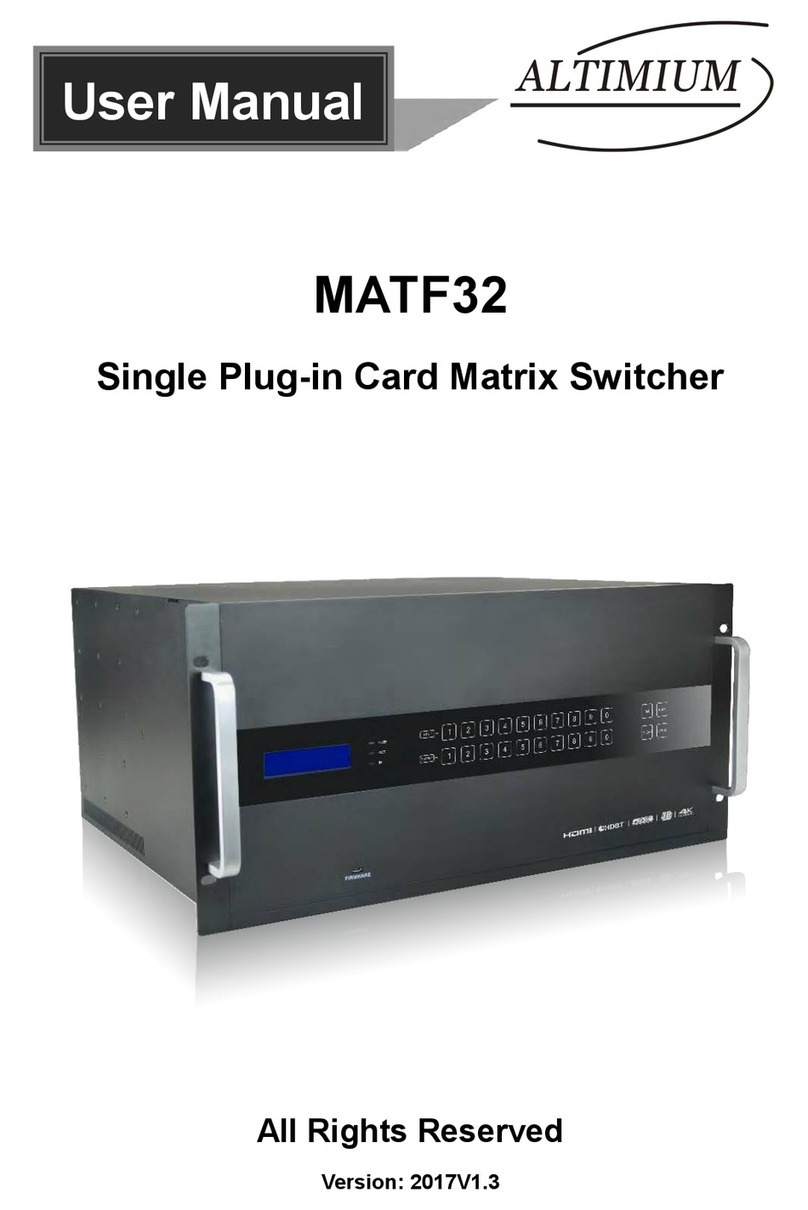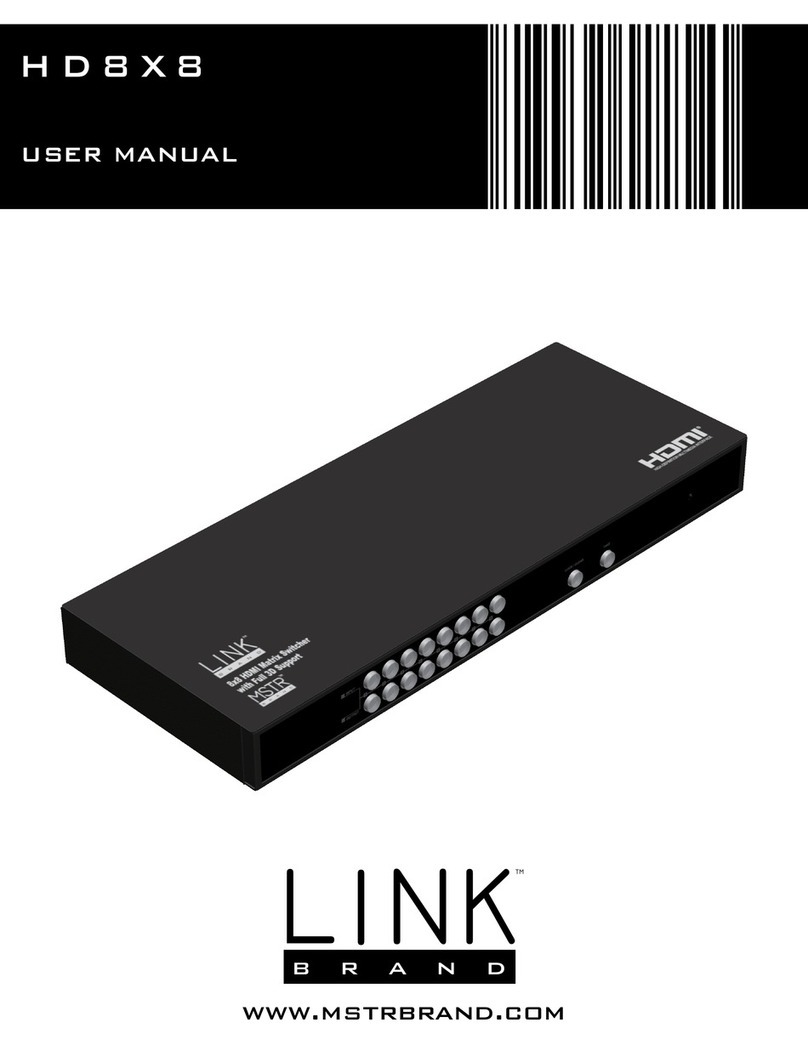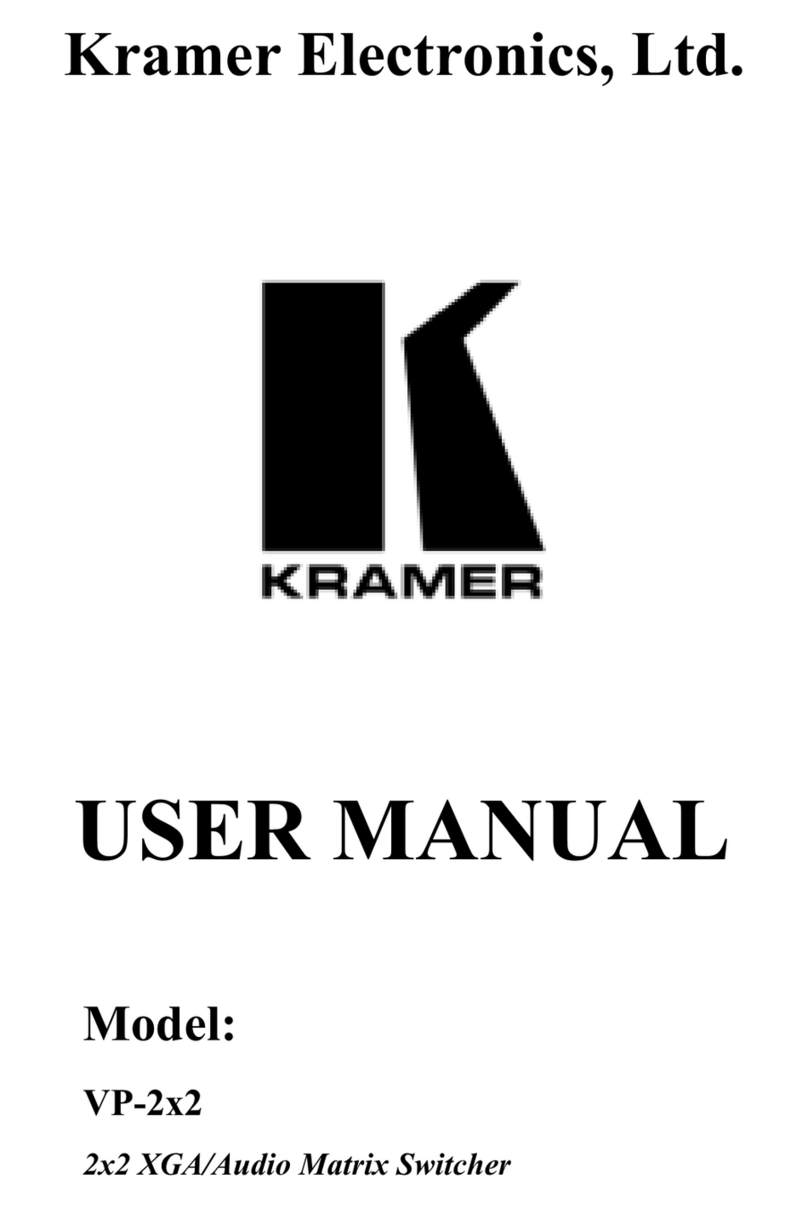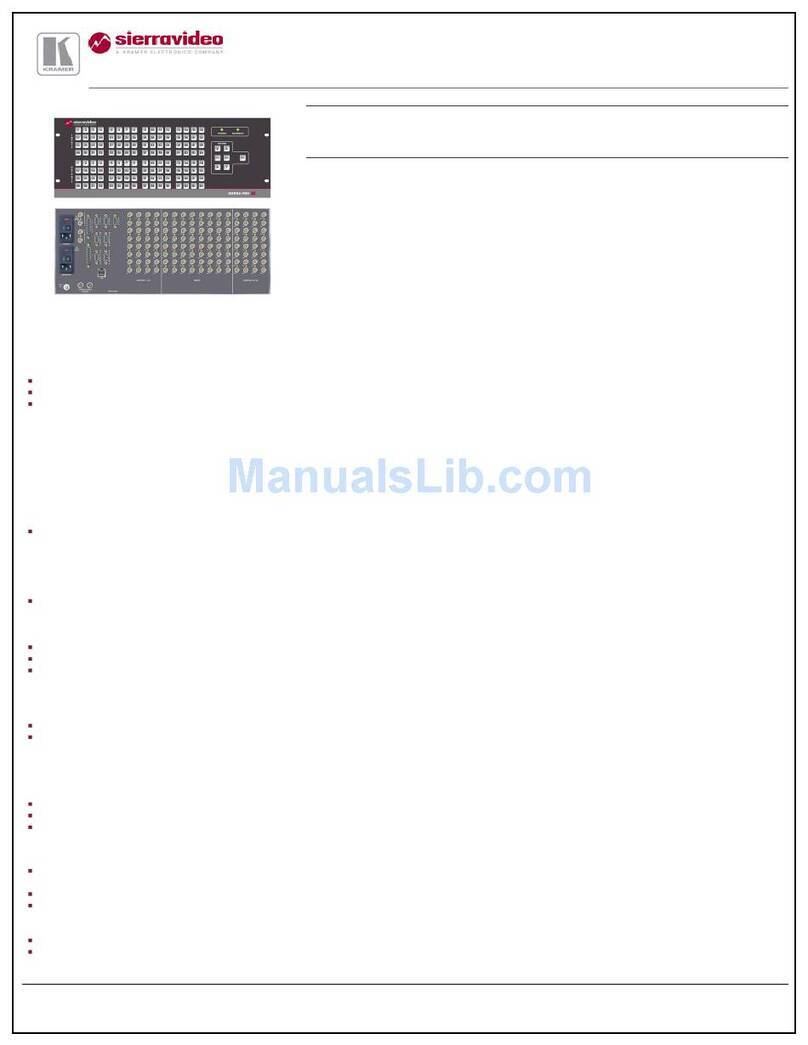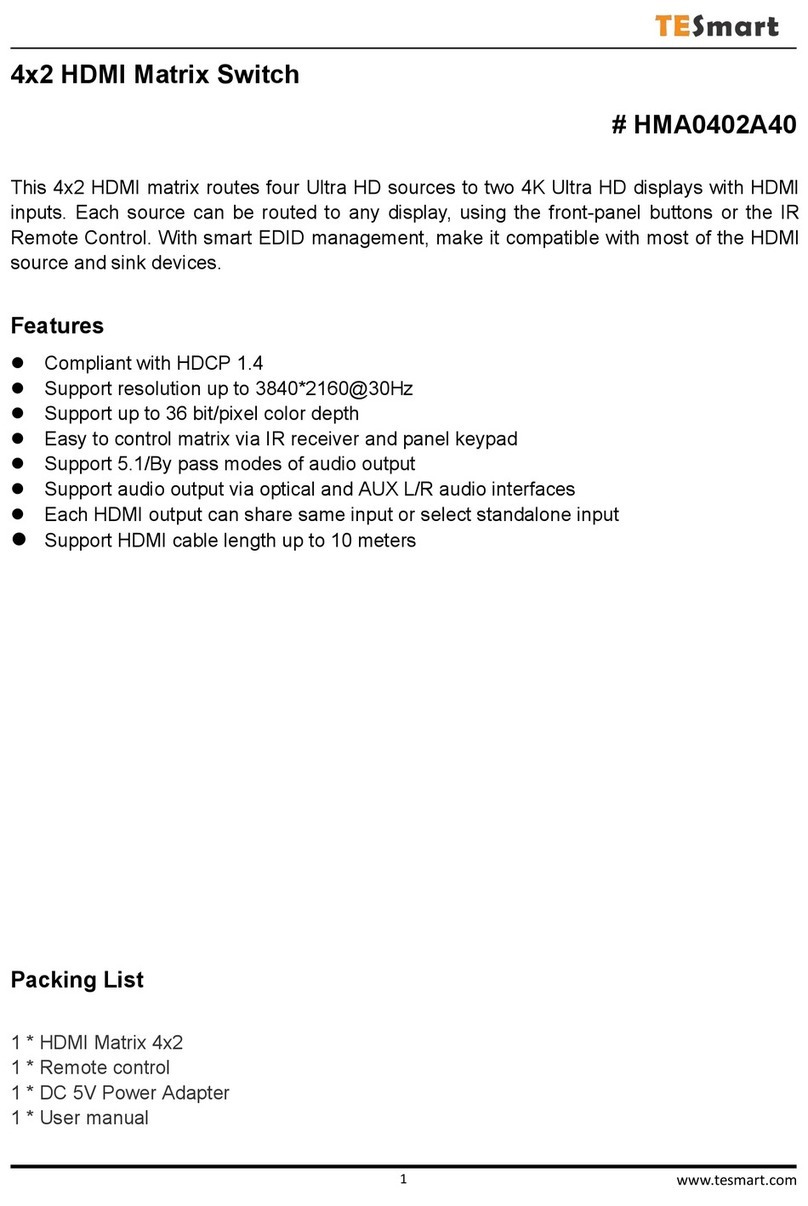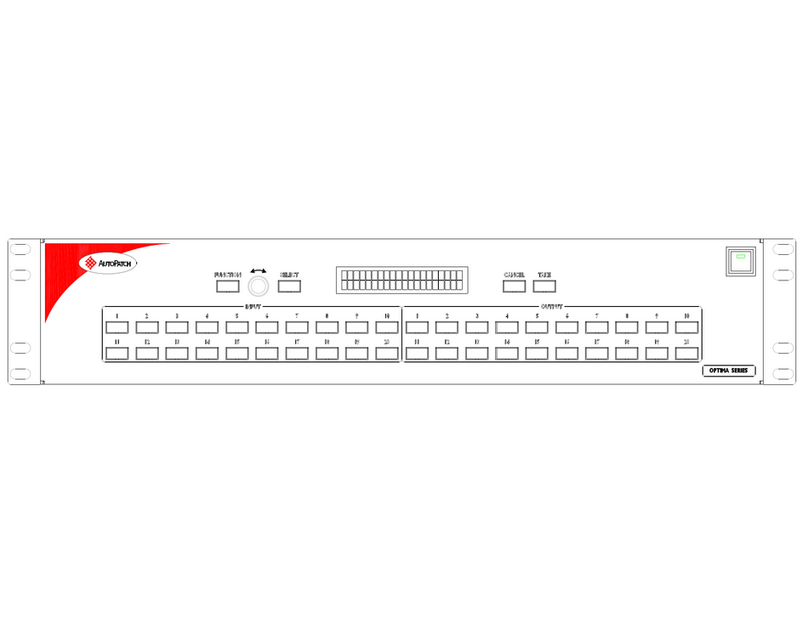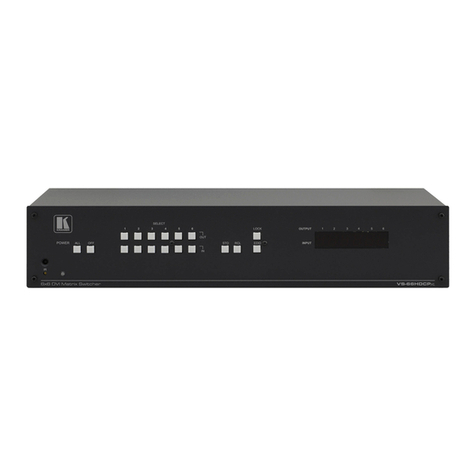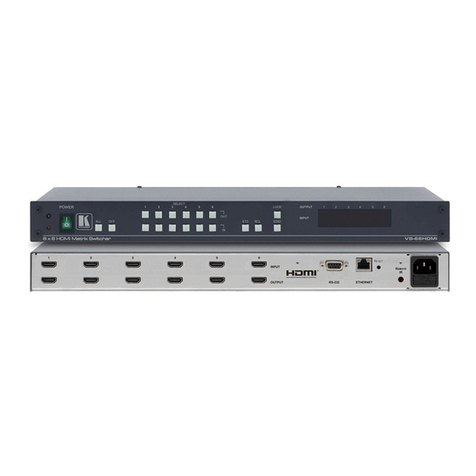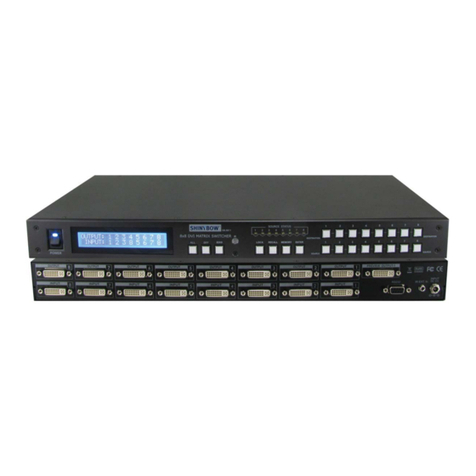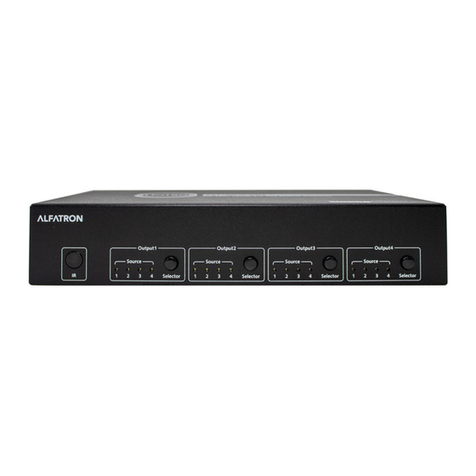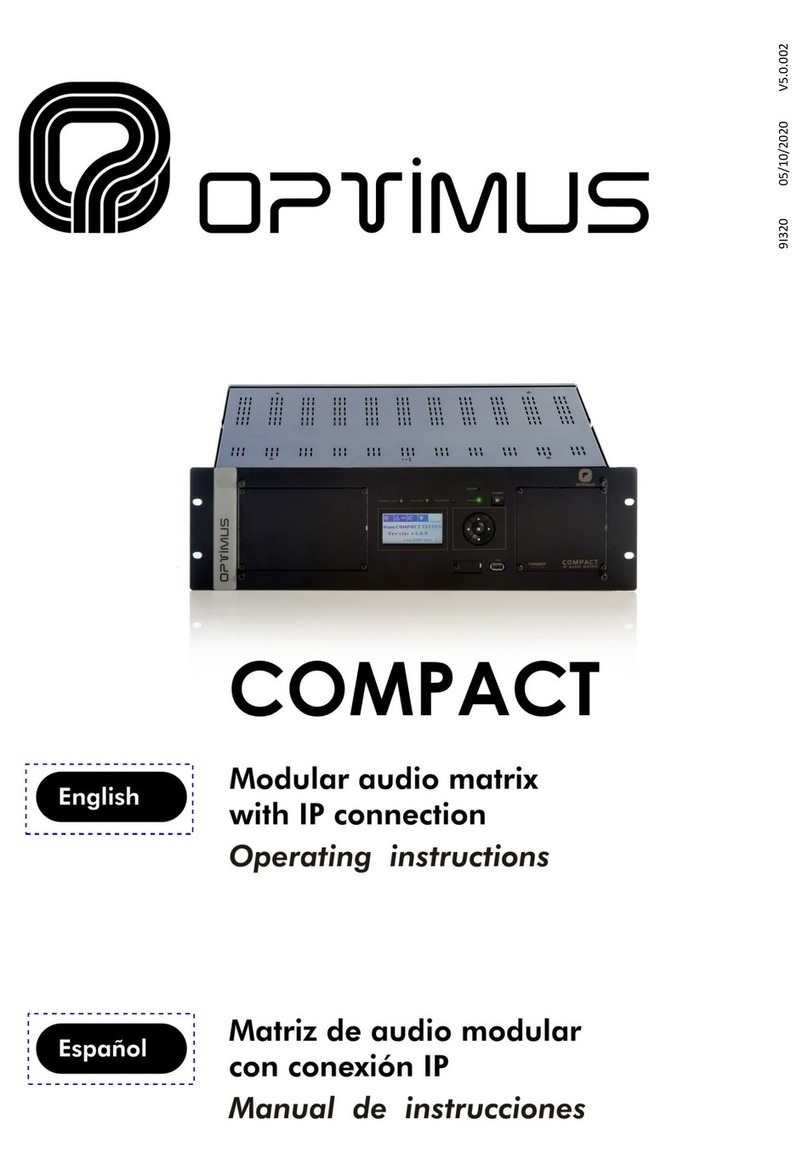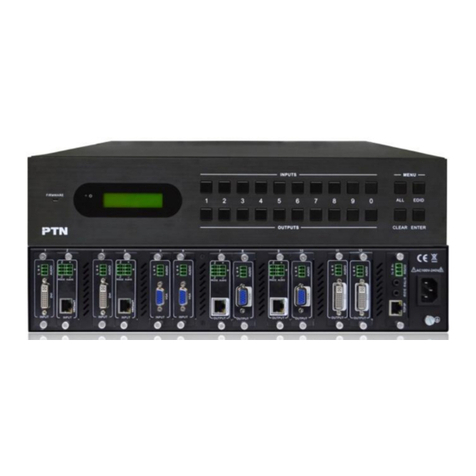
1
1. INTRODUCTION
This 10×10 HDMI/HDBaseT Matrix supports routing and transmission of
video (resolutions up to 4K@60Hz w/ HDMI 2.0 & HDCP 2.2) and audio
(multi-channel digital/stereo analog) while providing exible control
via IR, RS-232, Telnet or WebGUI. As many as ten UHD sources may be
routed to any of eight HDBaseT outputs (up to 100m at 1080p or up
to 70m at 4K) or two HDMI outputs at resolutions up to 4K@60Hz (8-bit,
Despite HDBaseT’s 10.2Gbps bandwidth limitation, 4K UHD HDMI video
sources, up to and including 4K@60Hz (4:4:4, 8-bit) as well as 10/12-bit
sources with HDR, are able to be processed and extended by the use
of AVLC (Adaptive Visually Lossless Compression) when needed. The
HDMI outputs can also be set to mirror any of the HDBaseT outputs for
local monitoring.
Beyond basic video routing, this unit also incorporates an independent
audio matrix with 14 audio outputs and 10 audio inputs. Offering
discrete audio routing, insertion and extraction, this product makes
it easy to have multiple audio zones within your installation. Four
additional analog audio outputs are available to provide stereo
breakout audio from the associated HDBaseT output (LPCM 2.0 only).
This unit also contains 3 independent audio mixers allowing for the
addition of music or a voice over to existing audio and video (LPCM
2.0 only). This product supports the OAR (Optical Audio Return)
feature, found on compatible HDBaseT receivers, allowing optical
audio sources connected to those receivers to be sent back to the
matrix unit for redirection. All HDMI and HDBaseT ports support up to
7.1 channel LPCM digital audio as well as Bitstream and HD Bitstream
audio formats.
Integrated LAN support allows your 100BaseT network to be extended
across compatible HDBaseT Receivers to smart TVs or projectors.
Internally generated test patterns (up to 1080p) are provided to assist
with setup, providing a simple way to verify both matrix and sink
functionality. The PoH (Power over HDBaseT) functionality provides
remote power to compatible HDBaseT Receivers, providing greater
exibility in your installations. Control is via front panel buttons with
OLED menu, WebGUI, Telnet, RS-232 or IR remote.
